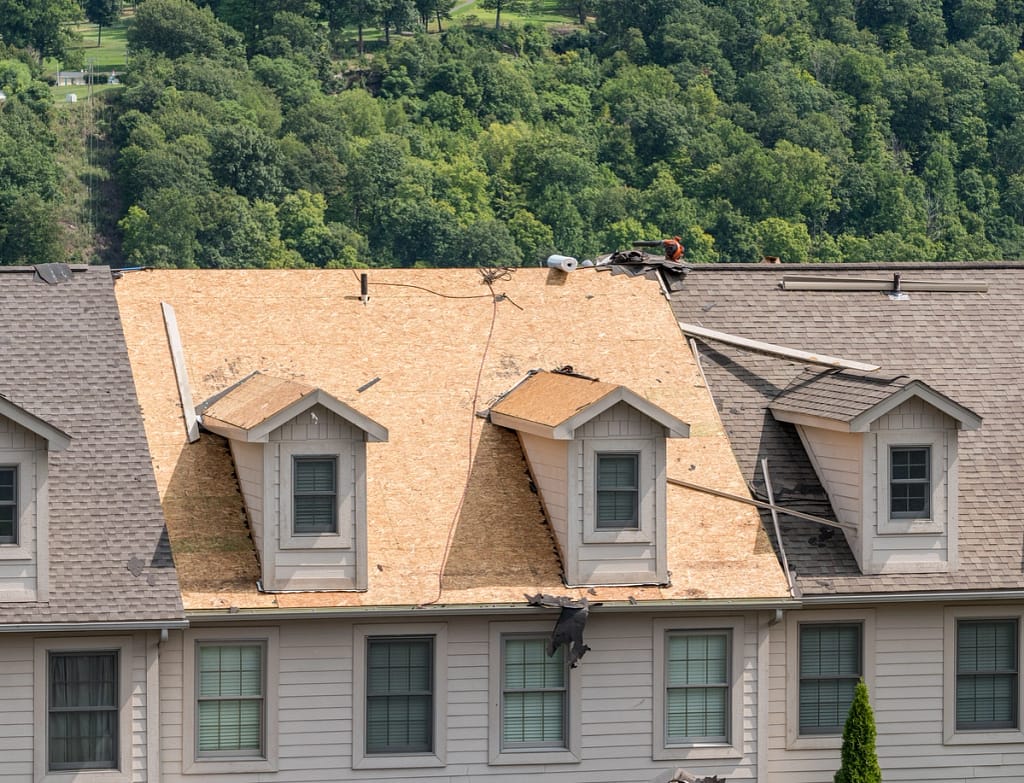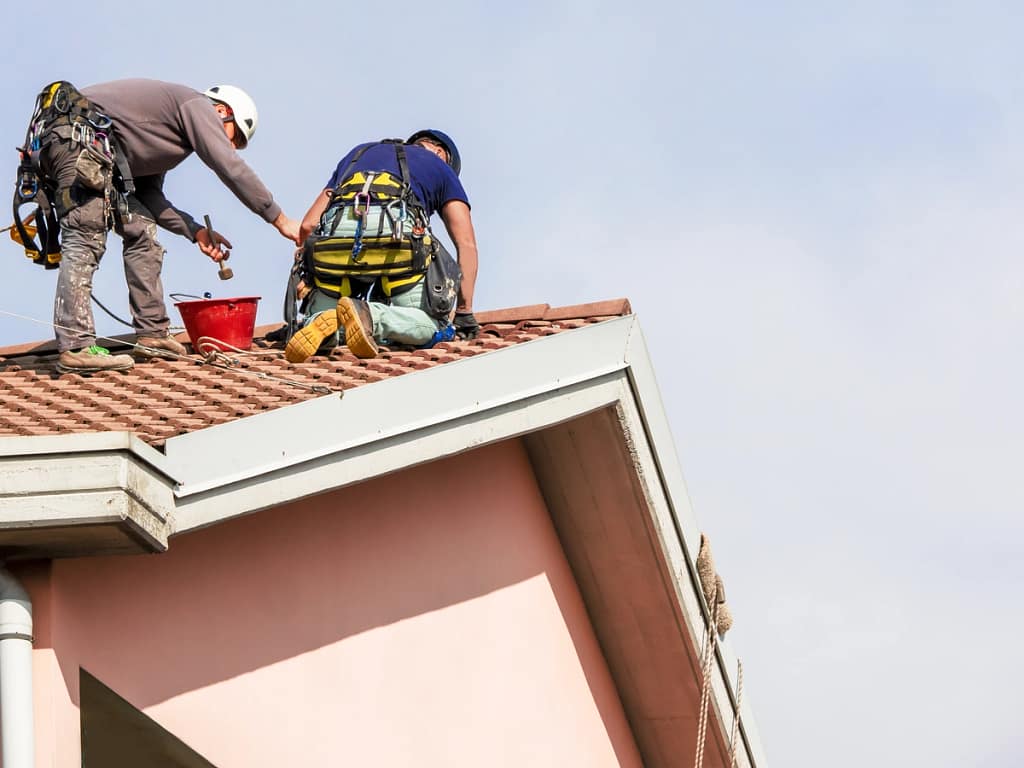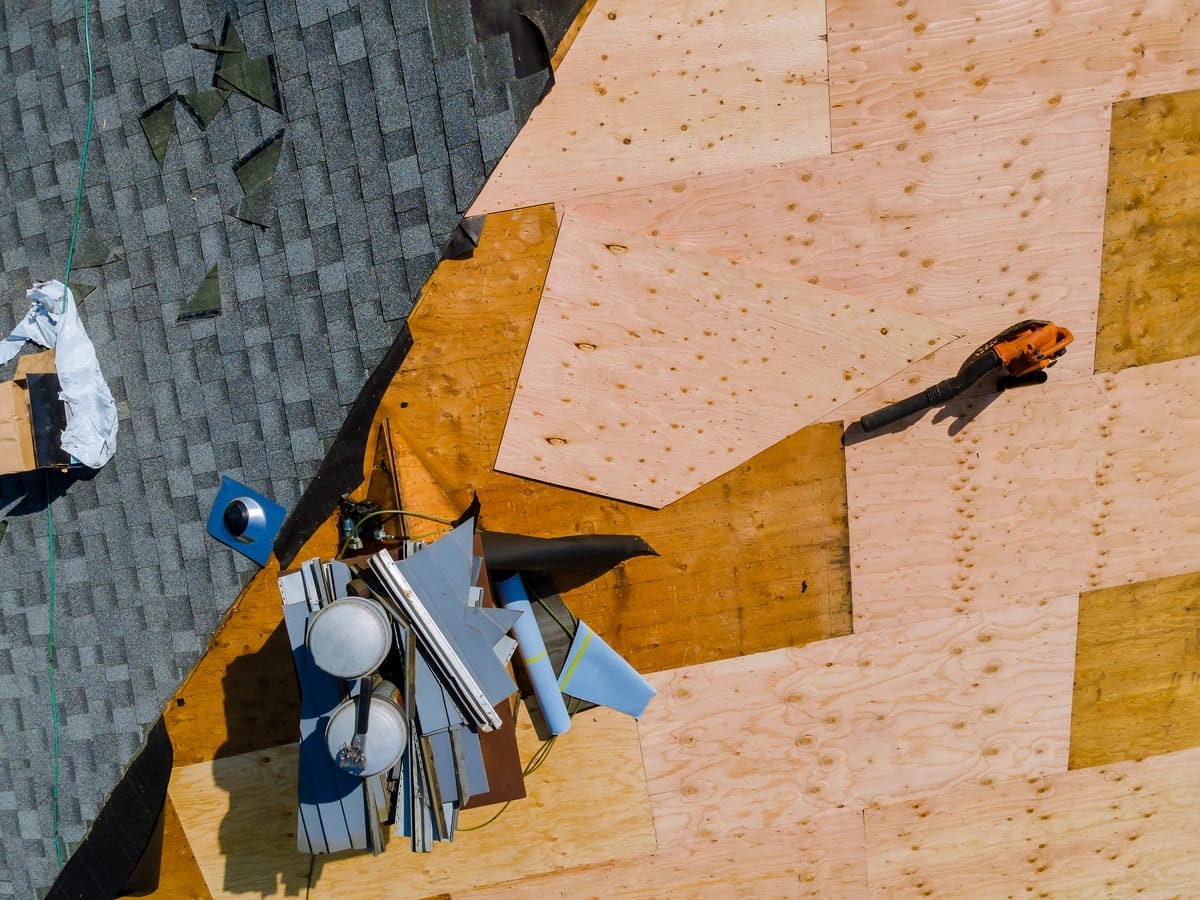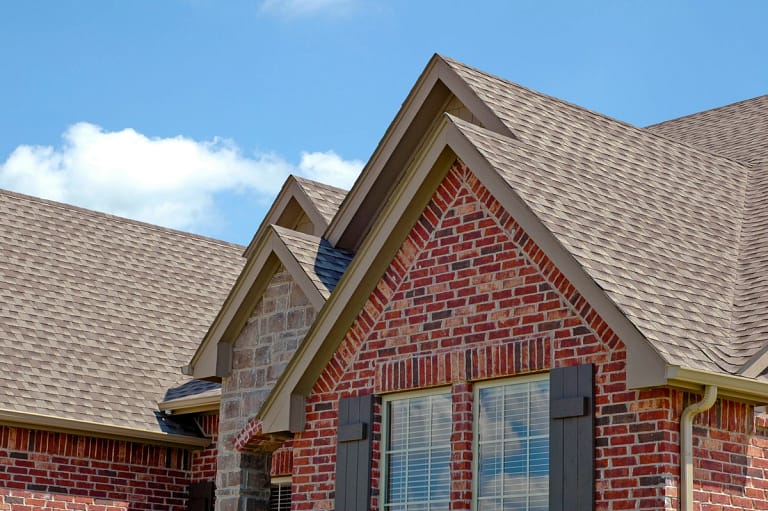Homeowners often face the daunting task of maintaining and repairing their property, and one of the most crucial aspects is the roof. A sturdy and well-maintained roof is essential for protecting your home and family from the elements. However, roof replacement can be a significant financial burden, leading many homeowners to seek financial assistance through government grants.
Hold up, you may be thinking. Government grants for roof replacements are a thing? They sure are, and you could be one of the lucky and deserving recipients! These grants are designed to help low-income homeowners take care of their home repairs so that they can live comfortably without breaking the bank.
In this blog post, we will dive into:
- The process of obtaining a government grant to pay for your roof
- Tips to increase your chances of success
- Alternative financing options.
Ready to get help with your roof? Keep reading to find out how!
When Is it Time to Get a Roof Replacement?

A well-maintained roof can last for several decades, but eventually, wear and tear take their toll, requiring a replacement. It’s crucial to know when it’s time to consider getting a new roof. Some signs that indicate the need for a roof replacement include:
- Age: If your roof is over 20 years old, it may be nearing the end of its lifespan, especially if it hasn’t received proper maintenance.
- Leaks and Water Damage: Frequent leaks, water spots on the ceiling, or mold growth are signs that your roof may be compromised and needs immediate attention.
- Missing or Damaged Shingles: If you notice a significant number of missing, cracked, or curling shingles, it’s a clear sign of roof deterioration.
- Sagging Roof Deck: A visibly sagging roof deck could be indicative of structural issues and demands a professional inspection.
- High Energy Bills: An aging or damaged roof may result in poor insulation, leading to increased energy consumption and higher utility bills.
Government Grant Eligibility and 7 Application Tips
While government grants for roof replacement exist, they are limited and competitive. To increase your chances of one of the free roof replacement grants, you’ll want to follow these tips:
1) Research Available Grants
Begin by researching federal, state, and local government programs that offer grants or financial assistance for roof replacements. Check with your local housing authority or visit official government websites for relevant information.
2) Eligibility Requirements
Review the eligibility criteria for each grant program carefully. Many grants target specific demographics, such as low-income families, senior citizens, or individuals affected by natural disasters. Specific grants are also available in areas that have extreme weather, including a weatherization assistance program.
3) Gather Documentation
Ensure you have all the necessary documents to prove your eligibility, such as income statements, property ownership documents, and proof of residence. If your roof has been damaged, it is a good idea to also have photos of the damage on hand.
4) Seek Professional Roof Inspection
The best way to determine the state of your roof is to hire a roofing company to inspect it. A certified roofing contractor can provide an assessment of your roof’s condition and necessary repairs or replacements. Having a professional evaluation can bolster your grant application.
5) Fill Out the Application Thoroughly
Pay close attention to the application instructions and provide all requested information accurately. Incomplete or inaccurate applications may lead to rejection.
6) Submit on Time
Most government grant programs have strict deadlines. Submit your application well before the closing date to avoid missing out on potential funding opportunities.
7) Be Persistent

If your initial application is rejected, don’t give up. Government grants can be highly competitive, and multiple attempts may be required to secure funding.
Average Roof Replacement Costs
Before diving into government grants and alternative financing options, it’s essential to understand the average costs associated with roof replacements. The final price can vary significantly based on factors such as location, roof size, material choice, and labor costs.
As of 2021, the national average for a full roof replacement ranged from $5,000 to $10,000 or more. For a more accurate estimate, it’s advisable to obtain quotes from multiple reputable roofing contractors.
5 Alternative Financing Options
If you are ineligible for a government grant or do not receive one, don’t panic! Several alternative financing options can help you fund your roof replacement. Here are some of the most common ways that homeowners receive financing assistance for their home repairs.
1) Roofing Financing Programs
Many roofing companies offer financing options, allowing homeowners to pay for the replacement in installments over time. These programs often come with low or zero-interest rates for qualified applicants.
2) Home Equity Loans or HELOCs
If you have built up equity in your home, you can consider applying for a home equity loan or a home equity line of credit (HELOC). These options typically offer lower interest rates compared to personal loans or credit cards.
3) Personal Loans
Some financial institutions provide unsecured personal loans for home improvement projects, including roof replacements. While interest rates may be higher than home equity loans, personal loans are often easier to obtain.
4) Community Assistance Programs
Local non-profit organizations or community development agencies may offer assistance programs for homeowners in need. Research options available in your area and inquire about potential funding opportunities.
5) Insurance Coverage
If your roof has been damaged due to a covered event, such as a storm or fire, your homeowner’s insurance might cover some or all of the replacement costs. Contact your insurance provider to understand your coverage and file a claim if applicable.
Roof Maintenance Tips

Maintaining your roof is essential to ensure its longevity and performance. Regular upkeep can prevent costly repairs and extend the life of your roof. Here are some valuable roof maintenance tips to keep your roof in top shape:
- Conduct Regular Roof Inspections: Schedule roof inspections at least twice a year, preferably in the spring and fall. Additionally, inspect your roof after severe weather events, such as storms or heavy snowfall. Look for signs of damage, missing or damaged shingles, loose flashing, and any other issues that might require attention.
- Clear Debris Regularly: Remove leaves, branches, and other debris from your roof and gutters regularly. Accumulated debris can trap moisture and lead to roof decay. Clogged gutters can cause water to overflow, potentially damaging the roof and the foundation of your home.
- Trim Overhanging Branches: Overhanging branches can scrape against the roof, damaging shingles and creating entry points for pests. Trim back any branches that come into contact with your roof to prevent potential damage.
- Check for Leaks and Water Damage: Regularly check your attic and ceilings for signs of leaks, such as water stains, mold, or mildew. Address any leaks promptly to prevent water damage and structural issues.
- Clean and Maintain Gutters: Clean your gutters and downspouts regularly to ensure proper water drainage. Clogged gutters can lead to water pooling on the roof, causing damage over time.
- Inspect Flashing and Sealants: Flashing around chimneys, vents, and skylights can deteriorate over time, leading to leaks. Check the condition of the flashing and sealants and replace them if necessary.
- Address Moss and Algae Growth: Moss and algae growth on your roof can retain moisture and cause shingle damage. Use a moss killer or a mixture of water and bleach to remove moss and algae, taking care not to damage the shingles in the process.
- Avoid Pressure Washing: While cleaning your roof is essential, avoid using a pressure washer, which can dislodge shingles and damage the roofing material. Instead, use a gentle cleaning solution and a soft-bristled brush, or hire professionals for the job.
- Maintain Attic Ventilation: Proper attic ventilation helps regulate temperature and moisture levels, preventing condensation and mold growth. Ensure that vents are unobstructed and functioning correctly.
- Address Ice Dams in Winter: In colder climates, ice dams can form on roofs, causing water to back up and seep under shingles. Proper insulation and ventilation can help prevent ice dams. If they do form, use a roof rake to carefully remove snow or seek professional assistance.
- Hire Professional Roof Inspections and Repairs: While you can perform some maintenance tasks yourself, it’s essential to hire a professional roofing contractor for regular inspections and complex repairs. Professionals have the expertise to identify potential issues early and prevent them from escalating
Get a Quality Roof Inspection
Having a qualified roofing contractor on your side is essential when it comes to securing roof repair grants. At Best Exteriors, we work closely with our customers to help ensure that all of their needs are met. Ready to get started with your application process? Contact us today to set up your roof inspection!




